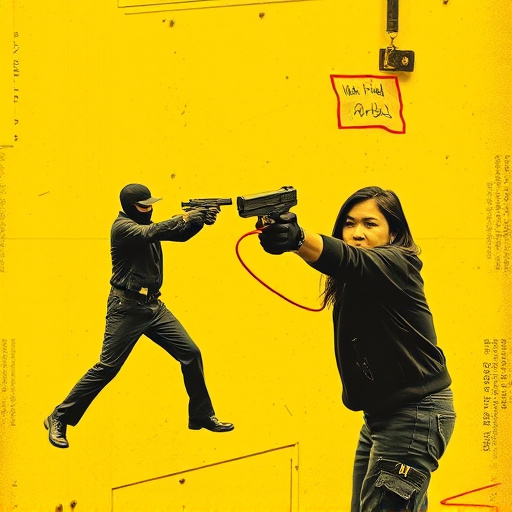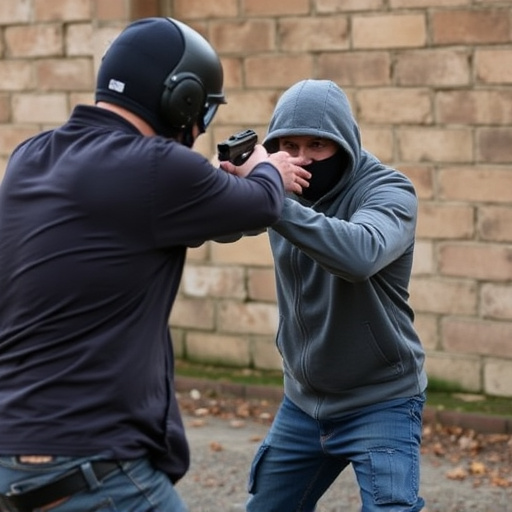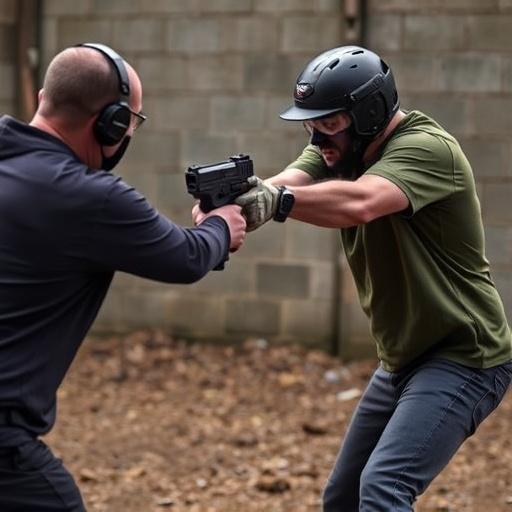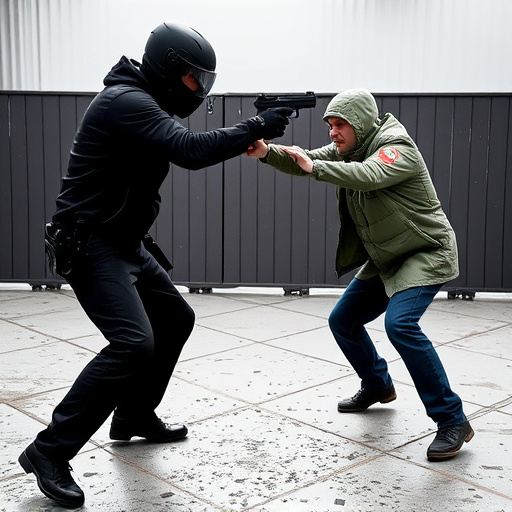Disguised stun guns, seamlessly blending with everyday items like flashlights or pens, offer discreet yet potent non-lethal self-defense options. With effective shock ranges from 5 to 10 feet (or up to 30 feet in some models), they're ideal for urban areas or outdoor adventures. Legalities vary globally, so understanding local regulations and safety protocols is crucial. Users should consider range, lighting features, and durable construction when choosing a disguised stun gun suited to their self-defense needs.
Stun weapons, often disguised as everyday items, offer powerful self-defense solutions with unique projectile range capabilities. This article explores the various aspects of these hidden defenses, from their concealed nature and surprising power to the legal implications and choosing the right fit for your needs. Discover how these tools can enhance personal safety while navigating the important considerations that come with their use.
- Disguised Stun Guns: More Than Just a Self-Defense Tool
- Projectile Range: Understanding the Capabilities
- Legal Considerations and Safety Measures
- Choosing the Right Disguised Stun Gun for Your Needs
Disguised Stun Guns: More Than Just a Self-Defense Tool

Disguised stun guns have evolved from simple self-defense tools to versatile devices designed for discreet and effective protection. These innovative weapons blend seamlessly into everyday objects, such as flashlights or pens, making them nearly undetectable when carried. Beyond their ability to shock and incapacitate an attacker, disguised stun guns offer peace of mind, especially in high-risk environments where quick response is crucial.
For individuals seeking enhanced security while maintaining a low profile, these stun devices provide a non-lethal solution. Their compact size and realistic appearances enable users to carry them discreetly without drawing unnecessary attention. With a simple activation, the disguised stun gun releases an electric current, temporarily paralyzing the assailant, allowing the user to escape or seek help. This level of personal safety is particularly valuable for professionals like security guards, delivery drivers, and individuals living in areas with high crime rates.
Projectile Range: Understanding the Capabilities

Stun weapons, often disguised as everyday items like flashlights or pens, offer a non-lethal option for self-defense. Their primary advantage lies in their projectile range—the distance at which they can effectively incapacitate a target. These devices fire various types of projectiles, typically small darts or electroshock pulses, designed to temporarily disrupt an individual’s motor functions and sensory perception.
The range of stun weapons varies significantly depending on the model and design. While some stun guns claim ranges up to 20 feet (6 meters), most reliable models achieve effective incapacitation within a closer radius, generally between 5 to 10 feet (1.5 to 3 meters). This range is crucial for self-defense scenarios, as it allows users to maintain a safe distance while still being able to neutralize a potential threat. Understanding the specific projectile range of a stun weapon is essential when considering it as a self-defense tool.
Legal Considerations and Safety Measures

The legality of stun weapon ownership varies significantly across different countries and regions, with strict regulations in place to govern their use. Many jurisdictions classify stun guns as firearms, requiring users to obtain permits or licenses to possess them legally. This is especially true for more powerful models capable of delivering higher voltage shocks, ensuring public safety from potential misuse. Disguised stun guns, often designed to look like everyday objects like flashlights or pens, are also subject to these laws, emphasizing the importance of adhering to local regulations to avoid legal repercussions.
Safety measures are paramount when considering stun weapons as self-defense tools. Users must be trained and educated on their operation, including understanding the range limitations and the ethical considerations surrounding their use. Stun guns have a limited operational range, typically ranging from 2 to 15 meters, after which the shock effect diminishes significantly. It’s crucial to respect personal space and avoid escalating situations by ensuring the device is only deployed when necessary for self-defense. Additionally, regular maintenance and awareness of local laws ensure responsible ownership and use of these powerful self-defense tools.
Choosing the Right Disguised Stun Gun for Your Needs

When considering a disguised stun gun for self-defense tools, understanding your needs is crucial. These compact and often sleek devices are designed to blend into everyday items like flashlights, pens, or even keychains, making them ideal for discreet self-protection. The range of these stun guns varies significantly; some models offer powerful jolts within 15 feet, while others extend the reach up to 30 feet or more.
Selecting the right one depends on your specific requirements and environment. Urban dwellers might prefer a model with a slightly longer range for added safety in crowded spaces. Outdoor enthusiasts could opt for a stun gun disguised as a flashlight, perfect for hiking trips where unexpected encounters may occur at varying distances. Always look for features like LED lighting, adjustable voltage settings, and durable construction to ensure the stun gun meets your self-defense needs effectively.
Stun weapons, particularly disguised stun guns designed as self-defense tools, offer a range of capabilities that can enhance personal safety. Understanding their projectile range and legal considerations is paramount for effective use. By choosing the right concealed stun gun tailored to your needs, you gain a powerful tool to deter threats and protect yourself in various situations. Remember, proper training and adherence to safety measures are essential when employing any self-defense mechanism.
